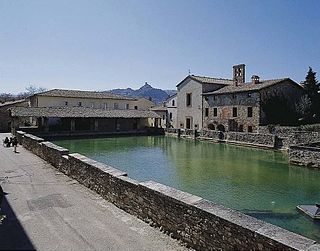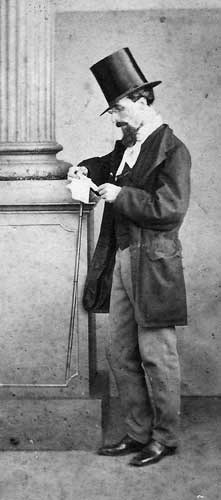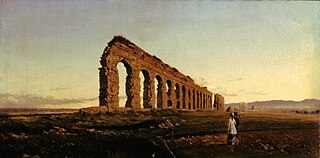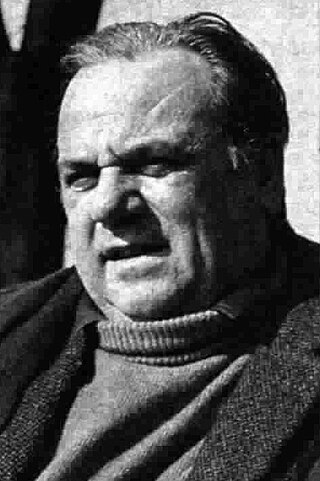Related Research Articles

Viterbo is a city and comune in the Lazio region of central Italy, the capital of the province of Viterbo.

Bagno di Romagna is a comune (municipality) in the Province of Forlì-Cesena in the Italian region Emilia-Romagna, located about 90 kilometres (56 mi) southeast of Bologna and about 45 kilometres (28 mi) south of Forlì.

Bagno a Ripoli is a comune (municipality) in the Metropolitan City of Florence in the Italian region Tuscany, located about 7 kilometres (4 mi) southeast of Florence.

Nicola Guidi di Bagno or Nicolò Guidi di Bagno was a titular archbishop of Atenia, bishop of Senigallia, and a cardinal. He descended from a noble family. His brother Gianfrancesco Guidi di Bagno and his uncle Girolamo Colonna were also cardinals.

Roselle is a frazione or village in the comune of Grosseto. The archaeological remains of the ancient city of Rusellae are located to the northeast of the modern settlement.

Bagno Vignoni is an Italian village and hamlet (frazione) of San Quirico d'Orcia, situated on a hill above the Val d'Orcia in Tuscany. It is a popular tourist destination and well known for its hot springs.

The Giorgio de Chirico House Museum is a house museum in the 16th century Palazzetto del Borgognoni at Piazza di Spagna 31 in Rome. The house was acquired by Giorgio de Chirico in 1948. It was left to the state by his widow and opened as an art museum dedicated to his work in 1998. Only open by appointment, it is closed on Mondays and Sundays. The nearest Metro stop is Spagna.

Vincenzo Cabianca was an Italian painter of the Macchiaioli group.

Adolfo Tommasi was an Italian painter.
Cesare da Bagno (1530–1564), also known as Cesare di Niccolo di Mariano Federighi, was an Italian sculptor and medallist.

Giuseppe Barbaglia (1841–1910) was an Italian painter.
Eugenio Tano was an Italian painter.

Carlo Bagno was an Italian actor.
Antonio Rinaldo was an Italian-Swiss painter. Born in Tremona, Switzerland, he painted mainly of genre, but also of religious subjects.

Alessandro Kokocinski was an Italian-Argentine painter, sculptor and set designer, of Polish-Russian origin.

Giovanni Francesco Guidi di Bagno (1578–1641) was an Italian cardinal, brother of cardinal Nicola Guidi di Bagno and nephew of cardinal Girolamo Colonna.

The House of Guidi di Bagno is an old Italian noble family which moved first into Romagna and then into Mantua from the 14th century.

Bagno di Gavorrano is a small town in Tuscany, central Italy, administratively a frazione of the comune of Gavorrano, province of Grosseto. At the time of the 2001 census its population amounted to 3,022.

Filare is a village in Tuscany, central Italy, administratively a frazione of the comune of Gavorrano, province of Grosseto. At the time of the 2001 census its population amounted to 439.
Pasquale Verrusio was an Italian painter, sculptor and engraver.
References
- ↑ Istituto Matteucci biography.
- ↑ Dizionario degli Artisti Italiani Viventi: pittori, scultori, e Architetti, by Angelo de Gubernatis. Tipe dei Successori Le Monnier, 1889, Page 398.